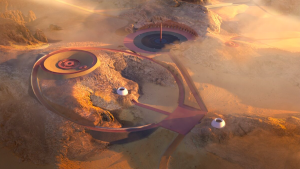First Published in
With the demand for reduced carbon emissions coupled with the challenge of design innovation, the motor industry has simultaneously given the electric car a face-lift and a new lease on life.
So is there a swing back to "electric"?
Tesla Motors is banking on it, with its ultra-sporty, energy efficient Roadster. The two-seater Roadster, fresh out of Silicon Valley, is now on sale. The first 100 Roadsters were pre-ordered in three weeks, making this baby the sexy "must-have" of the quarter.
It made Time magazine's list of top inventions for 2006 and is now close to hitting the road.
The Roadster's birth marks an interesting juncture in the growth chart of electric cars. For one thing, it's not a prototype, unlike the Lightning and the Wrightspeed X1. It is powered entirely by lithium-ion batteries (the same battery that drives most laptops and cellphones); and it can clock 0 to 60 mph in four seconds, scotching fears that it may be underpowered. The lithium-ion batteries are expected to last about 100 000 miles or more and pack replacement would likely be equivalent to engine replacement, in terms of timing and possible cost.
The Roadster's battery technology and software are held to be superior, and excellent performance is assured by Tesla. Curiously, the Roadster has been built on the chassis of a Lotus Elise, though the Elise's reputation for good handling on the road probably explains the decision.
At about $100 000, the vehicle's price is probably too steep for most of us, but if you have a little squirreled away in the bank, you could invest in the future of motoring. At this stage, though, you'll probably need to drive it in California, Chicago, New York City or Miami, where you can expect support and service. Beyond that, you'll be paying heavy premiums for transportation, for one thing. So the Roadster is very much for the United States market – for now.
The shape of things to come
Tesla is confident that the Roadster is the shape of things to come. Interestingly, its sheer functionality augurs well for more affordable electric vehicles that cater for the mainstream market.
Tesla itself is an interesting company. Funded by South African Elon Musk, of PayPal fame, and founded by CEO Martin Eberhard, a technical guru, Tesla's aim was to combine entrepreneurial savvy with design wizardry while producing a superior vehicle for the road: A beautiful, high-performance vehicle for the green generation.
Future vehicles from Tesla are predicted. Indeed, Fortune magazine recently revealed that a family-friendly, four-door sedan is scheduled for production in 2009. This car will cost half of what the Roadster costs, despite being, well, bigger.
Detractors have suggested that the Roadster and cars of its ilk are more "hobby horse" than functional vehicle, largely because of the price tag. But Tesla genuinely wants to popularise the electric vehicle, suggesting that its first vehicle was a high-end sports car only to "capture the imagination of people as to the possibilities of EVs".
"To build the kind of electric car that I personally would like to drive is really why I started," Eberhard told Jon Alain Guzik in an online interview recently.
Musk suggests that Tesla will succeed in its aims as hybrid cars have already become popular due to rising petrol prices and fears concerning global warming. The next step is going electric, as consumers will want cleaner vehicles that are cheaper to run in the long term, while still being eye-catching on the road.
It's worth noting that electric cars aren't entirely pollution-free. They can't claim to be "zero-emission" vehicles. Still, they're said to produce half the carbon dioxide per mile of a hybrid car, which makes them cleaner than any other vehicles on the road. Also, seeing as the emissions are at the power plant, sustainable energy sources and carbon sequestering become viable alternatives.
General Motors was one of the first companies to pursue – or revive – the electric dream in 1996, in the form of the EV1. GM leased 800 EV1s and counted Tom Hanks and Mel Gibson among the vehicle's fans. But even the celebrity support couldn't win the battle and the vehicle was discontinued, ostensibly due to lack of consumer demand. The documentary Who Killed the Electric Car? claims that the oil lobby, motor manufacturers and weak regulators were unwilling to entertain the dominance of the electric car, so ending the "electric dream" in California. But not everyone believes a conspiracy was afoot, suggesting that battery technology was unsophisticated and problematic.
This problem is unlikely to beset the electric car now. With more vehicles in the pipeline, including the eBox, Phoenix Motorcars's sports utility truck (SUT), ZAP-X, Tango, Th!nk and General Motors's Chevrolet Volt sedan, electric is making a comeback, albeit in slow and experimental stages.
Celebrities are once again behind the experiment, with Condoleezza Rice and Arnold Schwarzenegger praising the Roadster's look and, above all, performance (Rice calls it "a little rocket ship").
Time will tell whether the electric car becomes the vehicle of choice for global consumers. In the meantime, it's worth watching their designers' dreams taking shape.









